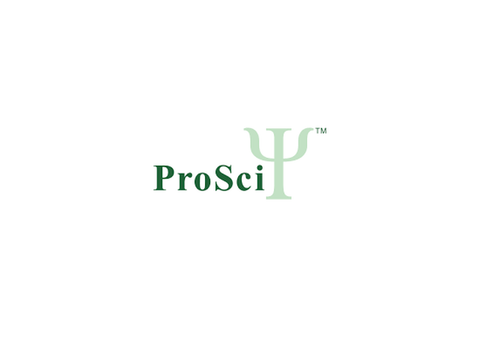Product Description
SIGLEC15 Antibody | 9017 | ProSci
Host: Rabbit
Reactivity: Human, Mouse, Rat
Homology: N/A
Immunogen: Anti-SIGLEC15 antibody (9017) was raised against a peptide corresponding to 14 amino acids near the carboxy terminus of human SIGLEC15.
The immunogen is located within amino acids 270-320 of SIGLEC15.
Research Area: Immunology
Tested Application: E, WB
Application: WB: 2 μg/mL.
Antibody validated: Western Blot in human, mouse and rat samples. All other applications and species not yet tested.
Specificiy: N/A
Positive Control 1: Cat. No. 1201 - HeLa Cell Lysate
Positive Control 2: Cat. No. 1211 - HepG2 Cell Lysate
Positive Control 3: Cat. No. 1220 - SK-N-SH Cell Lysate
Positive Control 4: Cat. No. 1304 - Human Liver Lysate
Positive Control 5: Cat. No. 1404 - Mouse Liver Lysate
Positive Control 6: Cat. No. 1463 - Rat brain Lysate
Molecular Weight: Predicted: 36kD
Observed: 34-36kD
Validation: N/A
Isoform: Human SIGLEC15 has 2 isoforms, including isoform 1 (328aa, 36kD) and isoform 2 (174aa, 18kD) . Mouse SIGLEC15 has one isoform (342aa, 37kD) and Rat SIGLEC15 also has one isoform (341aa, 37kD) . 9017 can detect human and possibly mouse and rat isoforms.
Purification: SIGLEC15 Antibody is affinity chromatography purified via peptide column.
Clonality: Polyclonal
Clone: N/A
Isotype: IgG
Conjugate: Unconjugated
Physical State: Liquid
Buffer: SIGLEC15 Antibody is supplied in PBS containing 0.02% sodium azide.
Concentration: 1 mg/mL
Storage Condition: SIGLEC15 antibody can be stored at 4˚C for three months and -20˚C, stable for up to one year. As with all antibodies care should be taken to avoid repeated freeze thaw cycles. Antibodies should not be exposed to prolonged high temperatures.
Alternate Name: SIGLEC15 Antibody: CD33L3, HsT1361, SIGLEC-15, CD33L3, Sialic acid-binding Ig-like lectin 15, CD33 antigen-like 3, Siglec-15
User Note: Optimal dilutions for each application to be determined by the researcher.
BACKGROUND: SIGLEC15 Antibody: Siglecs are vertebrate cell-surface lectins that recognize sialylated glycans and are involved in many physiological processes, such as glycoprotein turnover, cellular trafficking, and pathogen recognition. Most Siglecs are expressed on cells of the immune system. SIGLEC15 is a type-I transmembrane protein consisting of two immunoglobulin (Ig) -like domains, a transmembrane domain containing a lysine residue, and a short cytoplasmic tail. SIGLEC15 can interact with the activating adaptor molecules DAP12/10. Its activating signaling potential and unique preference for glycan recognition implies that SIGLEC15 may be involved in the immune surveillance of tumors and probably plays a conserved, regulatory role in the immune system of vertebrates.
 Euro
Euro
 USD
USD
 British Pound
British Pound
 NULL
NULL












